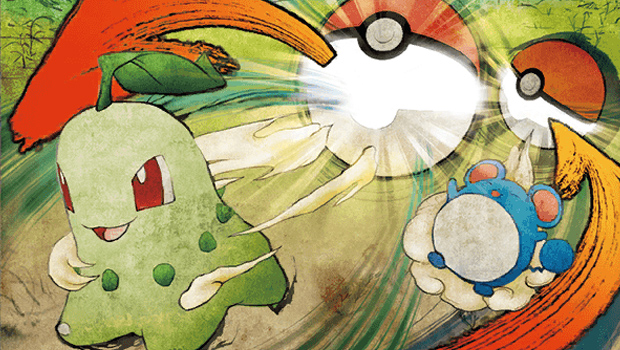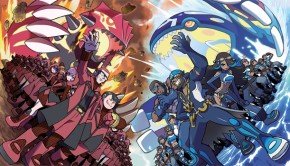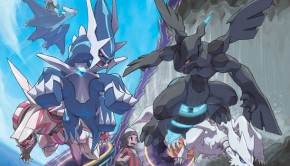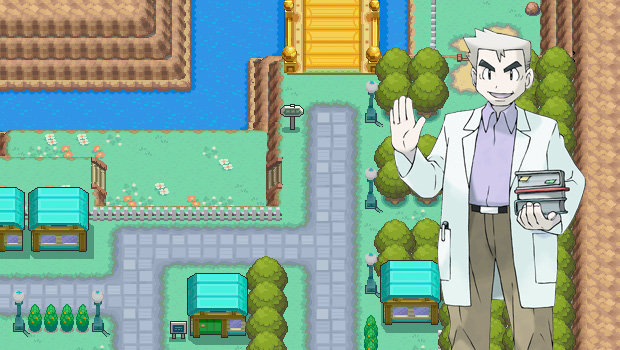Momentum Management in Pokémon
Ask any number of VGC players with a good understanding of the game what the most important thing to keep in mind all the time during a Pokémon battle, and the answer will likely be the same: momentum. Unfortunately, one of the most common mistakes among less experienced players is that they don’t fully understand what momentum is, how to gain it, or how to take advantage of it. This article will hopefully address all of these areas. Please note that I will make use of several examples in this article – some of them may seem slightly forced since, in most situations, your consideration of momentum is also influenced by prediction and probability management, as always. The examples are meant to be illustrative, rather than a real representation; real games will likely be much more complex scenarios.
What is momentum? How do I evaluate it?
Put simply, momentum is how we measure who has the advantage in any given 2 vs 2 Pokémon situation. It is defined by who has the most active threats. This is one of the major differences between the VGC format and single battles; in VGC (or indeed just Battle Spot Doubles!) momentum is much more difficult to evaluate due to the presence of two Pokémon on each side of the field. For example, consider the following situations; Mega Manectric vs Hydreigon, both at full health. Who has the momentum? That is easy – the player with Hydreigon has the momentum, as Mega Manectric carries no move that can OHKO Hydreigon (usually carrying Overheat, Volt Switch and Hidden Power Ice), while Hydreigon can easily OHKO Manectric back with a Draco Meteor.
However, if you add two more Pokémon to the situation it becomes much more complicated. Add Salamence at half HP to the Mega Manectric side and Garchomp to the Hydreigon side and things become much more complicated. Let us also assume for a moment that the Garchomp is EV’d to survive a Timid Mega Manectric Hidden Power Ice. Who has the momentum now? The answer is clearly much more complicated. In addition to the fact that both Pokémon on either side are threatened by the other side, this is Pokémon, so we don’t have perfect information – whether the Salamence is holding a Choice Scarf, or whether the Manectric is indeed Modest makes a lot of difference to the evaluation of this position. This is precisely why items such as Choice Scarf are extremely valuable, especially if they are unexpected, since they cause people to evaluate the position incorrectly, and so make an inappropriate play for the real situation. These items create momentum where otherwise you would not have it (since without a Choice Scarf, Salamence would be too slow).
Evaluation of momentum, then, is difficult. But it is an essential skill for VGC play, and even if not consciously, any reasonably skilled player is constantly evaluating it.
How do I gain momentum?
This is a tricky question, as there are several ways to go about it. Momentum is so central that in some ways this is equivalent to asking how you should play, which is an impossible question to answer as each position requires individual thought and attention. However, if we accept the above definition of active threats as correct, the central principle is that if you find yourself without active threats, you should make some move that creates an active threat. Or, if you already have an active threat, you should try to capitalize on this while creating more. A common mistake by less experienced players lies here – they will find themselves with no momentum, predict a move and blindly switch in whatever they feel will take the least damage. This is an incorrect thought process, as in many cases this leads to another turn where you have no active threats, and which forces you to take more damage while you continue to try to create some. It is impossible to say exactly what move you should make, but it is fair to say that you should ask yourself if your move is creating any momentum in your favour, and if it is not, do not play it.
For example, suppose that your half-HP Rotom-H and Shield form Aegislash with about ¾ with Leftovers are staring down Life Orb Hydreigon and Sitrus Berry Rotom-W at full health. This is not at all a favourable situation for you. Both of your Pokémon are threatened by your opponent’s Pokémon, and you are slower on both counts so you are not threatening any KOs. Suppose also that your Aegislash is Taunted and so it cannot King’s Shield, so if you are to preserve it, it must be switched. Your options are Mega Mawile and Choice Scarfed Salamence. What is the most reasonable move? Now, of course the answer is “it depends what my opponent decides to do.” Well, we cannot simply allow our opponent to land Dark Pulse and Hydro Pump for the double KO if they decide to play straight. So, something must either be Protected or switched. Examining the Aegislash slot, if we switch into Mega Mawile, we are immediately threatened by a Life Orb Fire Blast or even Will-O-Wisp from the Rotom next turn. Therefore, this switch is not good as it leads us to play defensively again next turn – it does not create any threats, so it does not gain us momentum. The switch into Salamence is somewhat better. It will take >50% from the Dark Pulse, certainly, but threaten both of our opponent’s Pokémon with a high-powered Draco Meteor next turn. This move certainly would gain us some momentum, so long as our opponent doesn’t predict the switch and Protect and double up on the slot with Thunderbolt it too. This would KO our Salamence, and considering our remaining Pokémon, likely lose the game on the spot. This is a question of style, risk, and reward, but I would largely consider that switch too risky. Since we cannot King’s Shield with the Aegislash, it makes little sense for our opponent not to at least aim a Dark Pulse that way, so we resign ourselves to our Aegislash’s defeat and examine options on the other side of our field. We can Protect Rotom and just wait for a free Salamence switch to free our position, but then our Rotom-H is still threatened by the opponent’s Rotom-W, which cannot be OHKO’d by Salamence’s Draco Meteor. Therefore, since we predict a likely Hydro Pump, it makes most sense to switch the Salamence into the Rotom-H slot and attack Hydreigon with Aegislash. This move will likely end with us getting switches into Mega Mawile and Salamence with largely no damage, allowing them to threaten. We would have gained momentum. Of course, this situation as a whole is still bad for us as we have no real way to threaten the Rotom-W effectively, but the example is supposed to illustrate the thought process on this particular move.
Of course, switching is not the only way to gain momentum. A great number of support moves exist solely to gain the team momentum. I’ll split this section into sub-sections since I have a few different things to talk about.
Volt Switch and U-Turn
This largely ties in with switching in general, but it’s worth adding that Volt Switch and U-Turn are fantastic, especially on fast Pokémon, because they maintain and build momentum as a switch would, but also do damage. Woo!
Trick Room, Thunder Wave, and other Speed-control Moves
These create threats by making your Pokémon outspeed and KO other threats they would normally be KOed by first. Thus, speed control gains you momentum as it provides you with more active threats.
Substitute
This is a slightly more obscure example as it doesn’t create any direct KO threats. Substitute allows you to threaten to 2HKO a threat switching in that you would normally be OHKOed by if you are faster, or even if you are slower, take the hit at a real cost of ¼ of your health and KO back. It essentially grants you an extra threat by being guaranteed to survive a hit. Focus Sash and the ability Sturdy work in similar ways.
Redirection
Working in a sort-of similar way to Substitute, it guarantees that the Pokémon you have — even while threatened directly — will survive long enough to act on that threat.
Protect
At first glance, this doesn’t make much sense. Protect is the most passive thing a Pokémon can do on a given turn, so how can this create momentum? Well, suppose that you are the player with more active threats — but with incorrect prediction, one of your opponent’s Pokémon could Protect, allowing its partner to pick up a free KO. In this case, provided you are sure your opponent will not switch, Protecting both of your Pokémon can pick up momentum by “baiting” an opponent’s Protect and easing your prediction on the next turn.
Okay, so now I know how to gain the momentum. What do I do with it?
As we saw in the previous section, having momentum really restricts your opponent’s choice of move. That was an extreme example, but the principle applies. Having momentum restricts your opponent’s choice of move, and so makes them easier to predict. You can then take advantage of this in spectacular (or not so spectacular) fashion in order to convert your advantage in momentum to advantage in material (number of Pokémon remaining), which is of course how you win Pokémon matches. The almost-ironic thing here is that by KOing a Pokémon you actually lose momentum; so the theory on how to convert momentum can be summarised as follows:
“The object of having the momentum is to lose it favourably.”
Here I will use an example from a real game. In Round 4 of Swiss at the Pokémon World Championships, Ben Kyriakou and Michael Wawrzycki played off and were in Game 3. Kyriakou had Manectric and Florges — both at almost full health with Light Screen against a Lapras and a Ferrothorn which had just Protected. Clearly, Kyriakou had all the momentum in this situation as he was threatening Lapras with Volt Switch and Moonblast, and Ferrothorn with Overheat. On this turn, Kyriakou’s momentum boiled over into a winning advantage as he made an excellent move: Overheat and Psychic at the Ferrothorn slot, covering a possible Nidoqueen switch-in. As it was, the Nidoqueen did switch in, and Kyriakou promptly KOed it, netting him a 4-3 advantage. The lesson here is that Kyriakou’s advantage in momentum allowed him to cover all his opponent’s likely options and convert his advantage in momentum into an advantage in material. Kyriakou subsequently won the match (despite his horrendous misplay in the final turn of game 1 – sorry Ben!).
There is a word of caution to add here, and that is that even if you appear to be able to KO something, the subsequent drop in momentum is sometimes great enough that it is actually not favourable to net the KO. These are some of the most illustrative examples of the importance of momentum, as it shows exactly what happens when a player neglects the concept and just plays to score KOs blindly. For a slightly forced example, suppose you are playing against Trick Room and you have Choice Scarf Gardevoir and Mega Gengar at full HP with Rotom-H and Salamence in the back against full HP Scrafty and Aromatisse with Mega Mawile and Rhyperior in the back.




vs




Suppose also that this is not Scrafty’s first turn in the battlefield (so Fake Out is not active) and that your Gengar is Timid, so it is reasonable to assume Aromatisse is EV’d to survive your Sludge Bomb, and that you know (from team scouting or a previous game) that this particular Aromatisse does not carry Protect (say Moonblast/Skill Swap/Trick Room/Heal Pulse). You can quite clearly score the KO on Scrafty this turn, but is it wise to do so?
Suppose you decide to just go ahead and Moonblast the Scrafty. Then you open yourself up to a turn something like this:
Gardevoir used Moonblast!
The opposing Scrafty fainted!
Gengar used Sludge Bomb!
The opposing Aromatisse lost 95% of its health!
The opposing Aromatisse’s Sitrus Berry restored health!
The opposing Aromatisse used Trick Room!
Opponent sent out Mawile!
Uh-oh. You may have inflicted a lot of damage that turn. But it came at a big cost; your Gardevoir is locked into Moonblast, and your opponent got his premier Trick Room Pokémon in for free. Your opponent has gained in momentum. Whether they then win the match or not from here depends on their play from here on, but the next four turns are going to be extremely difficult for you to negotiate and given the choice (and depending on the other Pokémon in the match), I would much prefer to be in the opponent’s position.
So, we’ve established that KOing the Scrafty leads to a very unclear position, entirely down to the momentum swing that bringing a new Pokémon in for free (especially as Trick Room goes up!) brings. So what are our other options? Given that the Aromatisse cannot protect and is trapped in by Shadow Tag, we can choose to double-target it; leading to a situation like this at worst:
Gardevoir used Moonblast!
The opposing Aromatisse lost some health!
Gengar used Sludge Bomb!
The opposing Aromatisse fainted!
The opposing Scrafty used Crunch!
Gengar fainted!
I would argue that this is actually a much more favourable situation for you. You may have traded your Mega, but their Trick Room setter is gone, and their Scrafty is still threatened by Moonblast. You also do not concede momentum as you also get the free switch and render their Mawile less effective as you are out of Trick Room for the rest of the match, making it much easier to deal with. The opponent can no longer take any gain in momentum from the setting of Trick Room.
In conclusion, momentum is a vast and extremely important part of how to play Pokémon effectively; too much to cover in one article. However, I hope that this short introduction has given you an insight into the ideas and processes behind how battles pan out.
12 Responses to Momentum Management in Pokémon
Leave a Reply
You must be logged in to post a comment.











I was hoping someone would post an article about this.
Is momentum tangible in pokemon?
Very nice article 🙂
This article is very well thought out! I like the fact that it is specifically outlined that KO’s don’t always equate to positive momentum. I can’t count the number of times I’ve KO’d something just because I could, only to stare down a direct counter, or something I just couldn’t even scratch with what I had out.
One thing I’d like to ask though, could momentum also factor in things like stat boosts? I see you’ve listed things like speed control and redirection, but could setting up a Calm Mind/ Swords Dance/ Dragon Dance also lead or create positive momentum in some situations? Or are those situations too far or few in between to be able to be quantified in such a way? Like setting up a Tyranitar (normal or Mega) with a Dragon Dance, forcing your opponent to use up guaranteed Protects while you stand to lose nothing from just Rock Sliding until it connects? (A very generic play and situation I will admit, but I am being purely hypothetical in describing that scenario for the sake of the example.)
And in the same vein, could use of Intimidate or even burns (through Will o’ Wisp or fishing for burns with Scald) be factored in? As they can and do influence plays and decisions with the afflicted Pokemon provided they are primarily physical or are hampered by chip damage (Like things with Life Orb or recoil moves, or stack damage with weather like Sand or Hail).
Thank you for the excellent article. I’m sure it will be of great use to new and even veteran players. 🙂
Excellent article, and one that is very thought-provoking because of the complicated measure of gauging momentum in a battle and how it shifts according to how turns pan out. The way this has been summarised is very clear for such an abstract topic. Again, a lot of people don’t often equate the notion that a knockout isn’t always to their benefit, and there are also cases where players neglect the notion that sacrificing a Pokémon is actually the most sensible move. This is either because it has served the purpose in battle, or has reached a state where it cannot function in a capable manner, and should simply be offered rather than risk switching in something brought in the backup that would take damage needlessly.
With regards to other factors perhaps not mentioned such as stat boosts, abilities and status ailments, a lot do offer some form of positive momentum on the whole, but you also have to be wary that there may be situations where they can also cost momentum. For example, you may opt to use Will-O-Wisp onto a Garchomp, but find you’ve essentially wasted a turn because it carries a Lum Berry. Another is your Intimidate user gets brought in with a Defiant Bisharp on the field, so that attack drop instead turns into an attack boost, making it much more of a threat. Whilst these are (somewhat forced) instances where you lose momentum where in a best of 1 situation you end up potentially in a difficult situation, such information in something like a best of 3 actually can help you to gain momentum in subsequent battles because your more aware of what actions will net the momentum better. Its why the information game is such a critically used phrase in high level events such as worlds, because it allows players to make significantly stronger plays.
Would have considered Fake Out a way of gaining Momentum. Am I incorrect?
A mathematician’s article. Nicely done!
Wow really nice and instructive article about the momentum, i never got this clearly on what momentum really was but now i have a better idea of the concept, thanks for the information SuperIntegration! XD.
Such a good article. I think another great example is all of Se Jun Park’s World’s matches…as Scott Glaza said after them, Se Jun may have lost Pokemon, but he was still always in the best position possible…thinking about how we could close out and win the game as opposed to scoring KO’s on Jeudy’s Pokemon.
Very nice article! I can really see how this would help less experienced players. Allthough, a scarfed Gardevoir would run Dazzling Gleam, right? And, did you consider the possibility of Aromatisse switching out for Rotom-H?
This sort of articles are great content, really appreciate these sort of thought-provoking pieces.
blueboy, he specifically said the were trapped to mega gengar’s shadow tag so that’s a thing in this situation.
Absolutely a fantastic article! i think that the idea of momentum in pokemon is a very good way of teaching new players (like myself) how to best look out your options and play accordingly a great read and extremely helpful hope to see more like these!